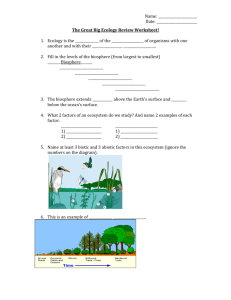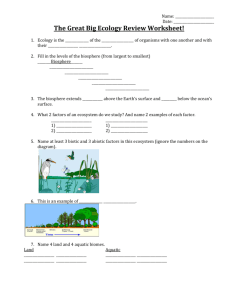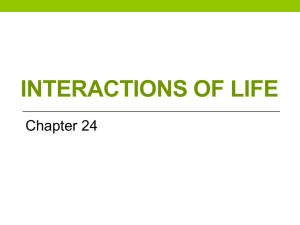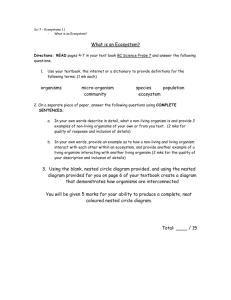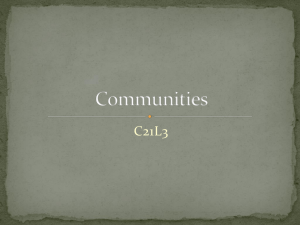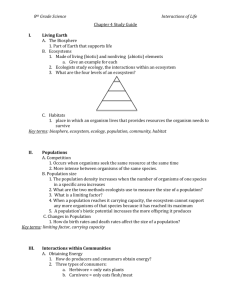Unit 5 – The Biosphere Vocabulary List 1. biosphere – all life on
advertisement
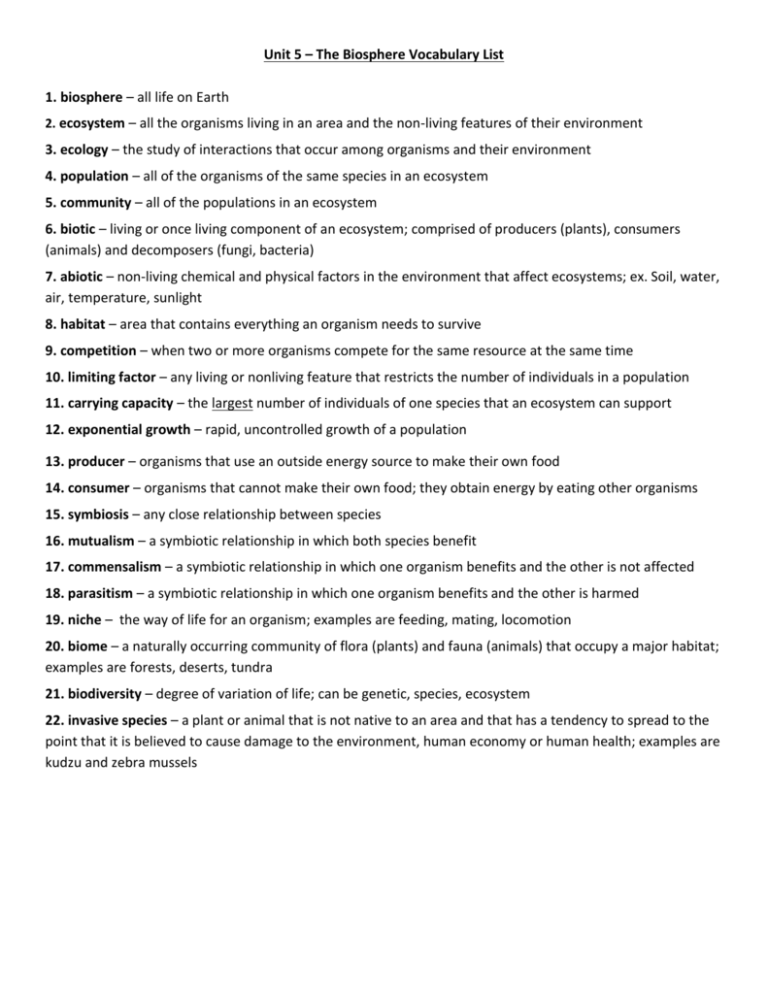
Unit 5 – The Biosphere Vocabulary List 1. biosphere – all life on Earth 2. ecosystem – all the organisms living in an area and the non-living features of their environment 3. ecology – the study of interactions that occur among organisms and their environment 4. population – all of the organisms of the same species in an ecosystem 5. community – all of the populations in an ecosystem 6. biotic – living or once living component of an ecosystem; comprised of producers (plants), consumers (animals) and decomposers (fungi, bacteria) 7. abiotic – non-living chemical and physical factors in the environment that affect ecosystems; ex. Soil, water, air, temperature, sunlight 8. habitat – area that contains everything an organism needs to survive 9. competition – when two or more organisms compete for the same resource at the same time 10. limiting factor – any living or nonliving feature that restricts the number of individuals in a population 11. carrying capacity – the largest number of individuals of one species that an ecosystem can support 12. exponential growth – rapid, uncontrolled growth of a population 13. producer – organisms that use an outside energy source to make their own food 14. consumer – organisms that cannot make their own food; they obtain energy by eating other organisms 15. symbiosis – any close relationship between species 16. mutualism – a symbiotic relationship in which both species benefit 17. commensalism – a symbiotic relationship in which one organism benefits and the other is not affected 18. parasitism – a symbiotic relationship in which one organism benefits and the other is harmed 19. niche – the way of life for an organism; examples are feeding, mating, locomotion 20. biome – a naturally occurring community of flora (plants) and fauna (animals) that occupy a major habitat; examples are forests, deserts, tundra 21. biodiversity – degree of variation of life; can be genetic, species, ecosystem 22. invasive species – a plant or animal that is not native to an area and that has a tendency to spread to the point that it is believed to cause damage to the environment, human economy or human health; examples are kudzu and zebra mussels


